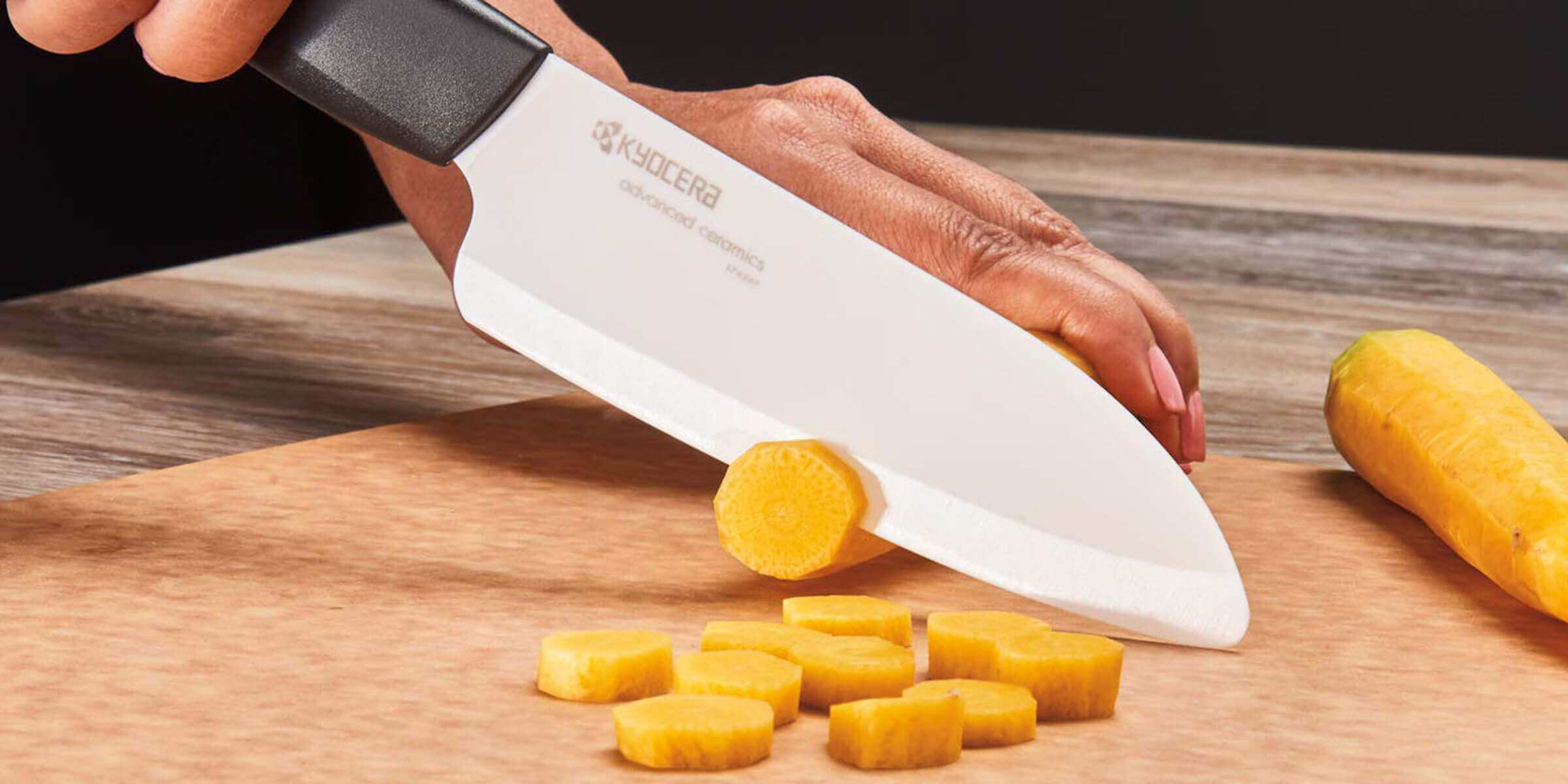If you have the right equipment, you can sharpen various knives, though some blades are harder to sharpen. Despite this, there is a lack of information available about sharpening ceramic knives
Ceramic knives are naturally razor sharp, so you might not think they require sharpening. No matter what type of knife they are, whether a serrated knife, a steel knife, or whatever else, they do the same thing.
The process of sharpening a ceramic knife is tricky, but it is possible if you follow the correct instructions. We will therefore discuss how to sharpen a ceramic knife today. First, let’s discuss why sharpening ceramic knives is difficult.
What Makes Ceramic Knives Challenging To Sharpen?
It is obvious that ceramic knives cannot be sharp when you think of them. These knives are made from ceramics that are different from the ceramics you find in your bathroom or kitchen.
The zirconium dioxide in ceramic blades accounts for their razor sharpness. Knives like these feel almost weightless in the hand. These knives are extremely brittle, which makes them difficult to use or sharpen.
When sharpening a ceramic knife, you should never put too much pressure on it, otherwise, it will break. Pressure will also break the glass. Thus, the two can easily be compared.
It is important to remember that ceramic does not form burrs when sharpened, since it is not ductile. Due to this, the sharpness of the blade is entirely determined by the movements you make while sharpening and the final grit of the edge.
Remember to use two hands when sharpening this knife to avoid applying too much pressure as you could damage it. Now let’s look at the details of sharpening a ceramic knife. When sharpening the ceramic knife, it’s important to use the right tools.
Sharpening the ceramic knife with these tools
Knives can be sharpened on traditional Waterstones as well as ceramic knives. It’s best to use a diamond stone, though. The 200-grit diamond stone is the best place to start sharpening your ceramic knife. When you get comfortable with that, you can use 600, 1,000, and finally 1,500.
It is due to their rock-hard nature that diamond stones are ideal for sharpening ceramic knives. Because of this, removing material from them doesn’t require a lot of effort. Fast and effortless sharpening of the edge is possible with diamond stones.
Also, you won’t be tempted to apply more pressure to the blade as you sharpen it – which will lead to it snapping. We’ll now discuss what you can do as you hone the edge to prevent it from cracking.
What’s the best way to prevent ceramic blades from breaking?
Ceramic blades must not be sharpened with one hand since you will end up adding too much pressure that will break them. Sharpening the blade requires both hands. When holding and positioning the edge, you should use gentle force. While sharpening it, make sure you stay still, so that you don’t unintentionally apply pressure, which will result in it breaking.
By using both hands and a gentle force, you can sharpen a blade using both hands without breaking the edge. When you hold it with both hands, you will be less tempted to apply too much pressure. You’ll feel in control because you’ll feel in control.
When sharpening a knife, it doesn’t matter which way your hands are positioned. It is possible to use them either downwards or upwards. There are only ups and downs, as well as smooth ups and downs. Providing your hands are steady while you sharpen them. Whatever direction you use for sharpening your blade, it will become sharp.
When ceramic knives are sharpened, they retain their sharpness for a long time. In any case, you know that the diamond stone is the best tool for sharpening them. Taking care of your knife and learning about proper maintenance is important. Now let’s talk about that.
Ceramic Knife Care And Maintenance
If you maintain your ceramic knife properly, it will not break, and you will need to sharpen it less often. After using the knife, you should always hand wash them immediately. They should never be thrown in the sink. At the very least, that can result in the blade chipping.
When using the ceramic knife, you should also avoid using a glass cutting board. The blade will chip if you do that. Replace the wooden cutting board with a plastic or wooden one. With a ceramic knife, only soft and thin foods can be cut. Food that is frozen, thick, or hard should never be cut with this knife.
Also, you should store your knives separately in a protective sleeve, as they should not be stored with other utensils. You can expect a long service life from ceramic knives if you care for them properly.
Final thoughts
It may seem unnecessary to sharpen ceramic knives because they are brittle but very sharp. In spite of this, you should sharpen every blade, including ceramic knives.
The idea of sharpening these brittle knives yourself can be daunting, so you might prefer to hire a professional. The right sharpening tools and gentle handling can help you sharpen these knives.
Honing these blades with a diamond stone is the best method. In order to avoid being tempted to exert a lot of force as you sharpen them, you should use both hands as well. Once you become familiar with sharpening these blades, you’ll see that it’s not that hard.
